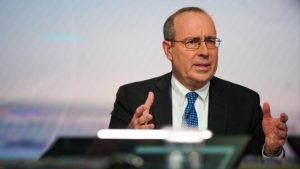Trading lessons on US elections
Unlock the US Election Countdown newsletter for free
The stories that matter on money and politics in the race for the White House
The writer is a former chief investment strategist at Bridgewater Associates
With a consequential US election only days away, investors and analysts have been increasingly asked how they are trading the event. Shifts in government policy after elections can obviously influence market and economic trends.
But correctly predicting changes in government policy and market reactions is far from straightforward, even if traders correctly call the highly uncertain outcome of this election. As always, timing is key even when there is a clear policy shift to trade on. When are policy proposals announced? How much is discounted in market valuations when proposals become reality?
The 2016 campaign and victory of former president Donald Trump provide useful examples of these challenges. His rhetoric around trade led many investors to position portfolios in ways they thought would benefit if he became president and quickly imposed tariffs. This was perhaps best reflected in currencies of countries that had large bilateral trade imbalances with the US. Many sold off sharply versus the dollar into and immediately after the election.
The Mexican peso seemed to be the tariff trade of choice after Trump on the campaign trail called the North American Free Trade Agreement “the worst trade deal ever”. Indeed, the dollar gained nearly 14 per cent against the peso just between November 8 and 11 in 2016 on prospects for trade rules to be quickly modified at Mexico’s expense.
One could argue at that point that potential tariffs on Mexico were at least partially discounted in the peso’s valuation. Further currency depreciation would require tariffs to become reality, and that didn’t happen for a while as Trump prioritised tax cuts and deregulation. Nafta discussions didn’t start until August 2017, and broader tariffs only started rolling out in 2018. Mexico’s currency and its equity market strengthened from mid-November 2016 until the following summer when Nafta talks began.
Beyond timing government announcements, there is a separate issue for investors: policy implementation. Consider the Chips and Science Act that became law in August 2022. The Sox semiconductor equity index rose 15 per cent from July to August 9 when Biden signed the bill into law, notably outperforming the S&P 500 index. The fact that roughly $52bn of subsidies was going into semiconductor-related business became well known and appeared priced into markets. But that didn’t necessarily mean the trade was over. Implementation takes time. The Commerce Department had to set up a team and logistics to manage the programme. It wasn’t until December 2023 that commerce announced its first allocation.
What’s important here is that even if a policy change is known, where and when capital gets deployed is not. As disbursements are announced, they can boost not just individual stocks but also the sector. Further, such policies are created in the hope that they spur private-sector funding as well, so there is a positive multiplier for the economy. In these cases, the election trade has the potential to be profitable for prolonged periods.
Another challenge with trading elections is appreciating how to weigh policy changes with other factors influencing markets. Take for example, semiconductor stocks after the Chips Act passed. While capital allocations may have helped the sector, it seems clear that broader optimism on technology and artificial intelligence also attracted investors.
This can work the other way, though, where an election trade can be overwhelmed by other, sometimes non-governmental forces. Back in 2017, the Federal Reserve was well into a tightening cycle, normalising monetary policy after years of an ultra-easy stance that followed the 2008-9 financial crisis and recession.
While growing expectations for, and then confirmation of a large tax cut initially supported US equities, that positive momentum reversed in the second half of 2018 on fears that fiscal stimulus could overheat the economy and push the Fed to tighten more aggressively. At the same time a trade war was undermining sentiment. The S&P 500 fell about 25 per cent between September and December 2018, only recovering after US and Chinese leaders called for a trade truce in January 2019 and the Fed promised to be “patient” about further interest rate hikes.
Making elections trades obviously depends on individual risk appetites and timeframes. But one thing is clear — election bets are as uncertain as any trade. It is always complicated. Investors should be wary of being caught up in the current political clamour.
#Trading #lessons #elections




